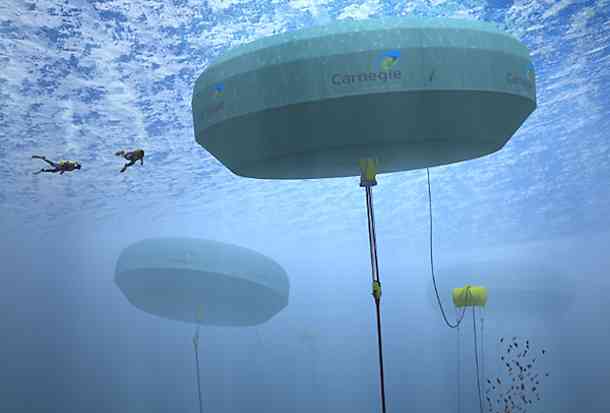If you’re a fly on the wall at the COP21 in Paris, you’ll probably hear the world leaders talk about natural gas, wind energy, and solar power. What you may not hear about is ocean energy. This isn’t really surprising since it’s a relatively new technology and isn’t as popular as other clean energy sources. However, if you take a close look, you’ll see that ocean energy may be one of the keys to reducing the world’s dependence on fossil fuels and halting climate change.

This is what National Geographic wants the world to see, and it does so by making ocean energy a part of its “Breakthrough” series (which tackles next-gen innovations and technology). Specifically, it will be discussed in “Water Apocalypse”, the Breakthrough finale episode. In this episode, NatGeo will focus on Carnegie Wave Energy, a company that specializes in ocean energy and has successfully installed wave farms in Australia.
Carnegie Wave Energy made waves in the clean technology arena when it worked on the Perth Wave Project in partnership with the Australian government. The Perth Wave Project consists of three CETO 5 units that are installed off Garden Island, where HMAS Stirling (the largest naval base in Australia) is located. Unlike other wave energy generators (which have a buoy-type design and convert energy from surface waves), the CETO 5 are fully submerged. This allows them to tap into the movement of stable and predictable subsurface waves and ensures that they will not be affected by storms.
The Perth Wave Project has caught the attention of many clean technology advocates not only because of the positioning of the CETO 5 units but also because of how the entire system performs. Carnegie Wave Energy designed the system in a way that it provides electricity to the naval base and supplies it with high-pressure water to power a desalination plant. The latter is considered to be a huge step for science; traditional desalination processes requires a lot of energy, and experts have been looking for ways to reduce this energy demand or perhaps harness renewable energy to power desalination plants. With the Perth Wave Project system, desalination can take place without producing tonnes of emissions.
Two of the CETO 5 units were already in place in late 2014, and the third was installed in March 2015. The installation of the third CETO 5 unit is the subject of Water Apocalypse. Director Angela Bassett and her staff filmed the process, showing how the crew and engineers from Carnegie Wave Energy guided the massive buoy towards its target and prepared for anything that might go wrong during the installation.
Aside from featuring the Perth Wave Project, Water Apocalypse will also touch upon other innovations, including the dew-collecting bamboo tower in Ethiopia as well as the California desalination/water purification plant that’s powered by solar energy.
Water Apocalypse will be aired on NatGeo on December 13 at 9:00 PM EST. The finale, as well as the other episodes of its Breakthrough series, is a must-watch for any clean technology advocate and anyone who’s concerned about climate change.
Leave a Reply
You must be logged in to post a comment.